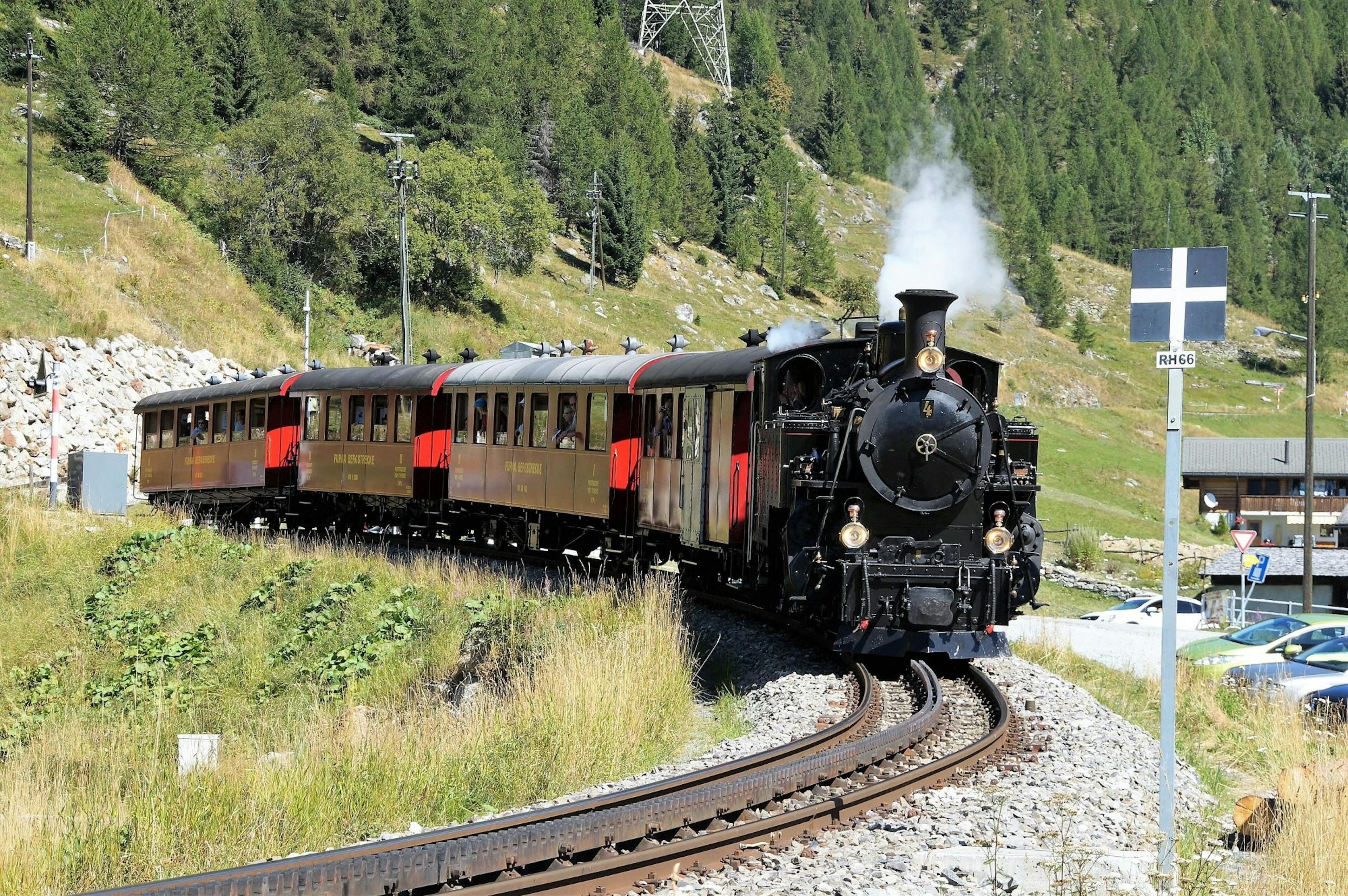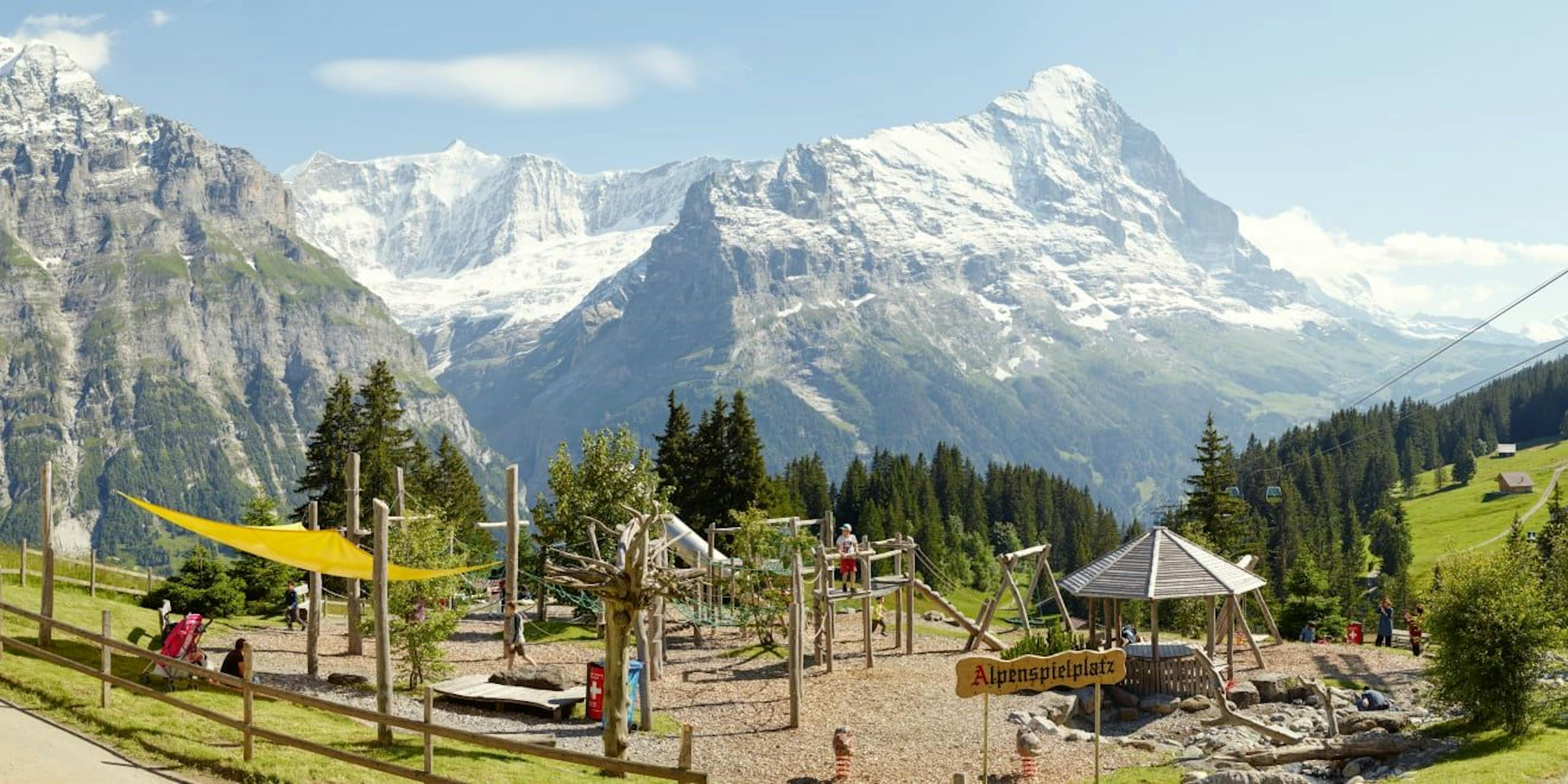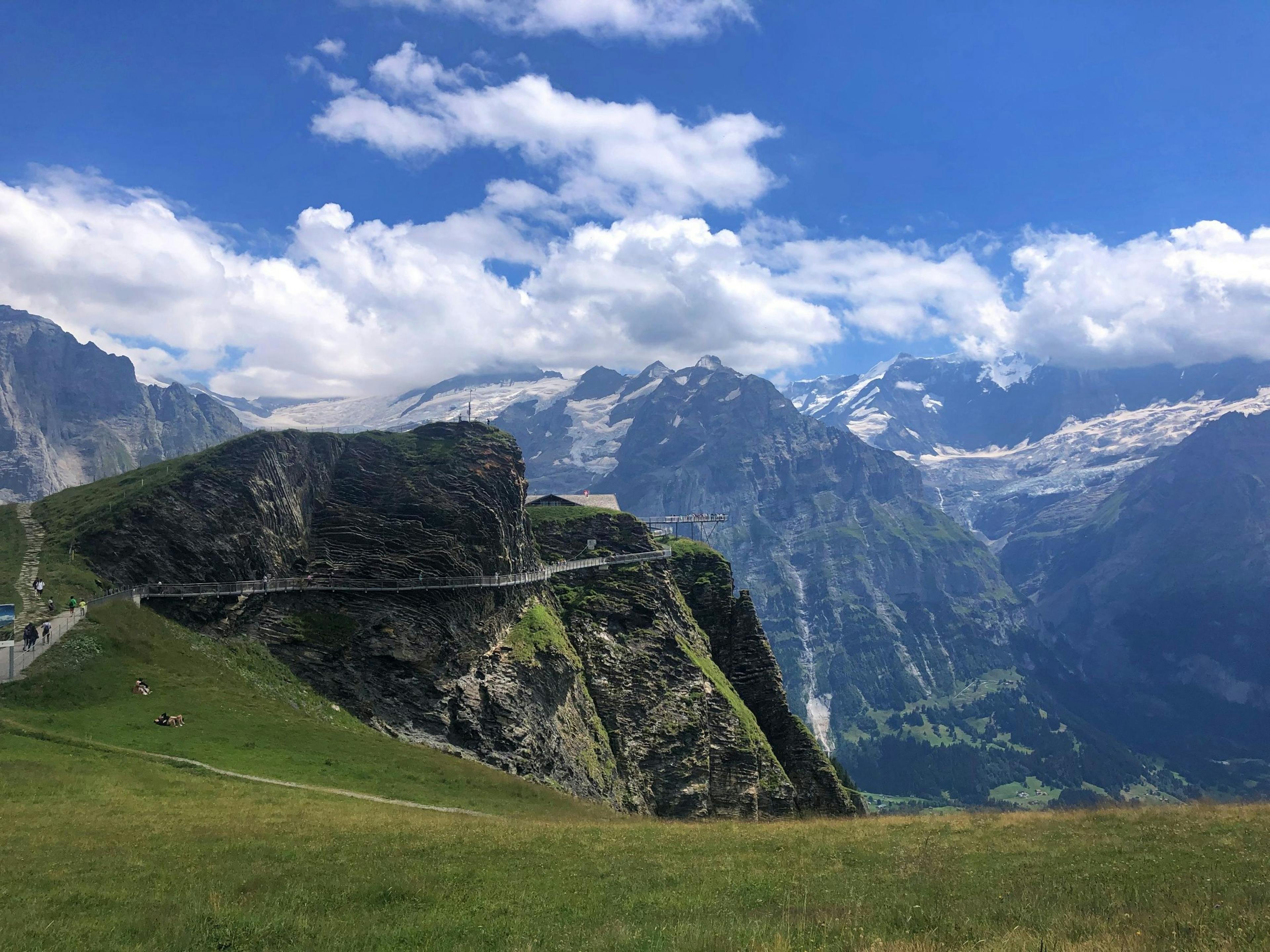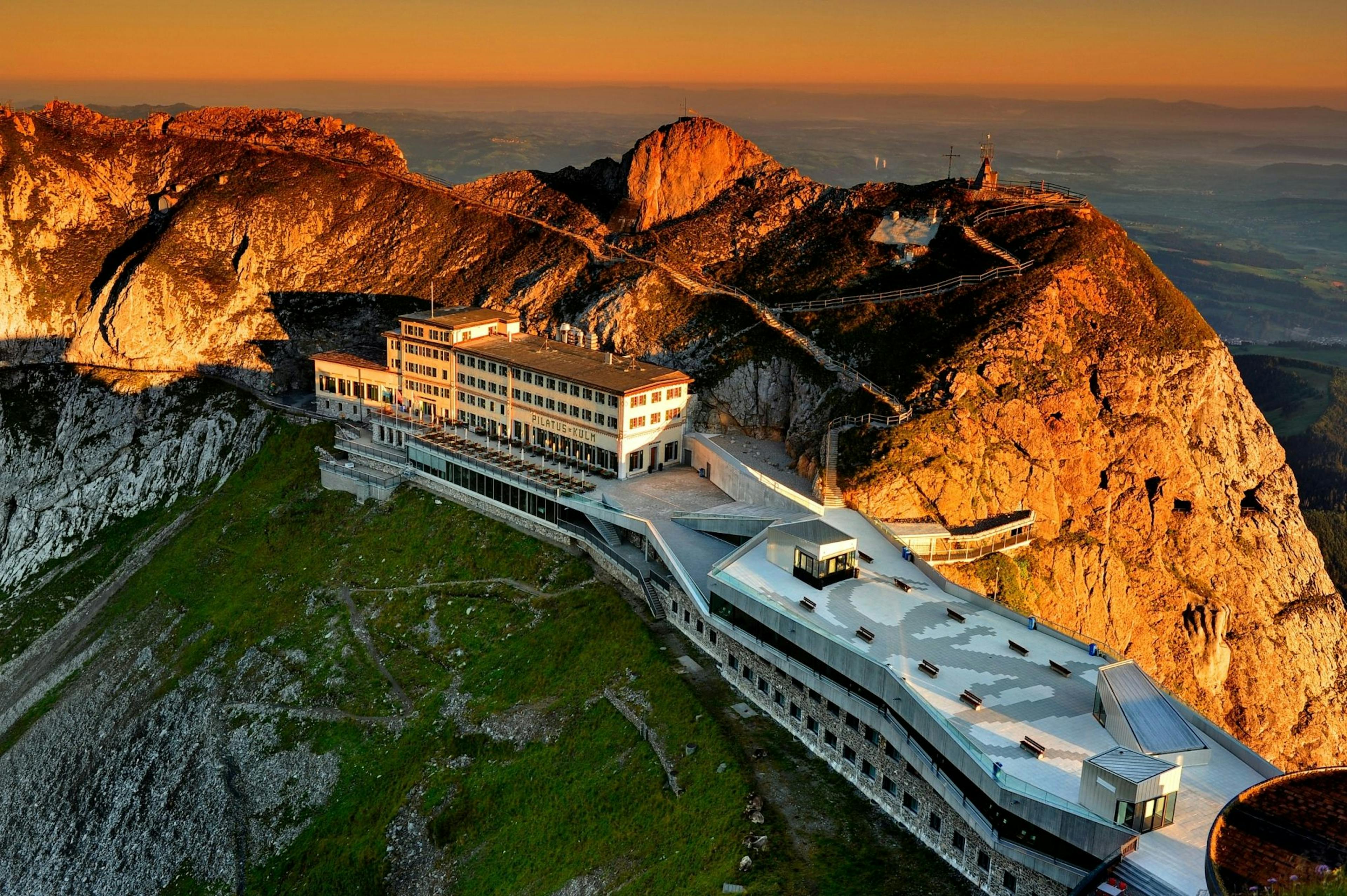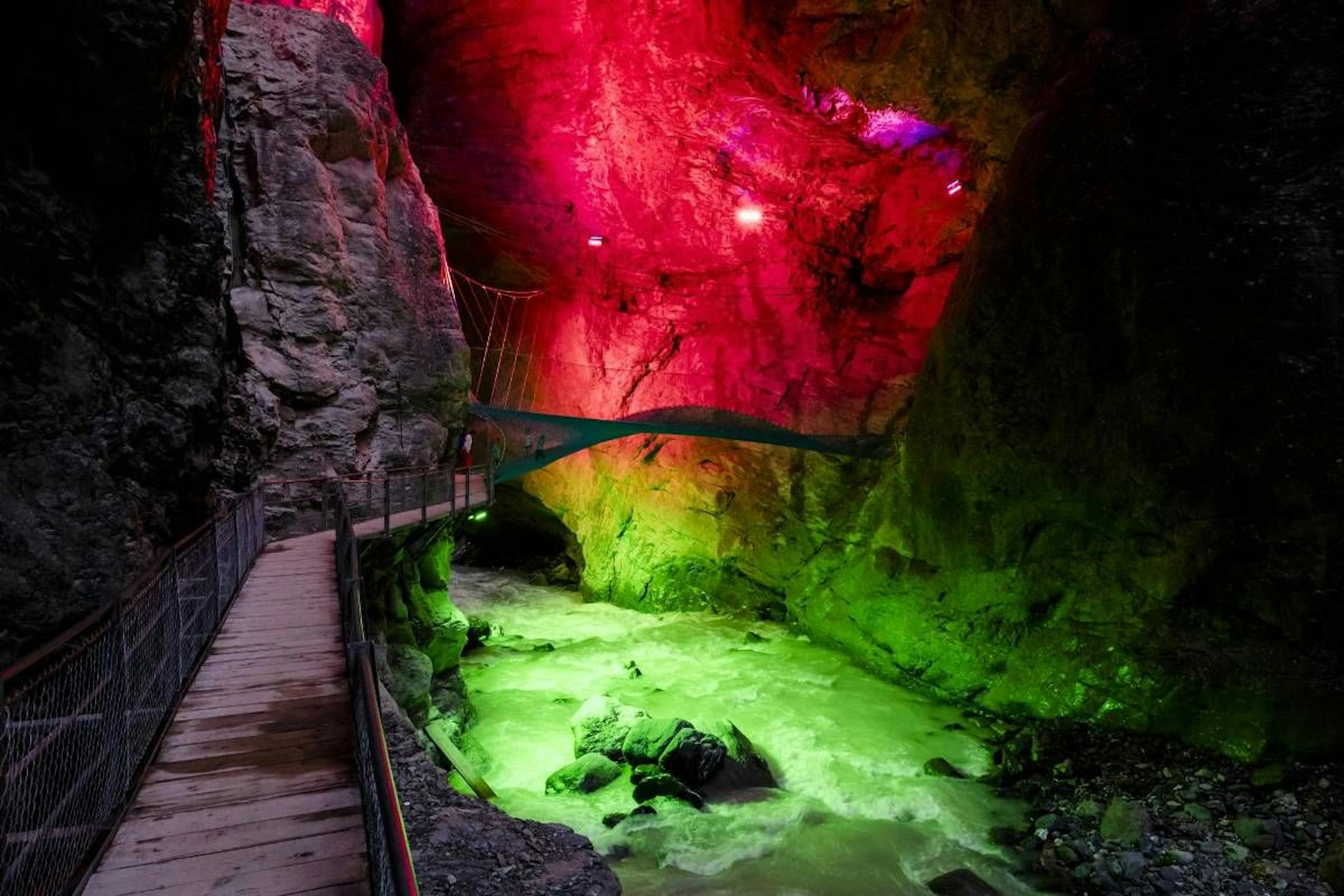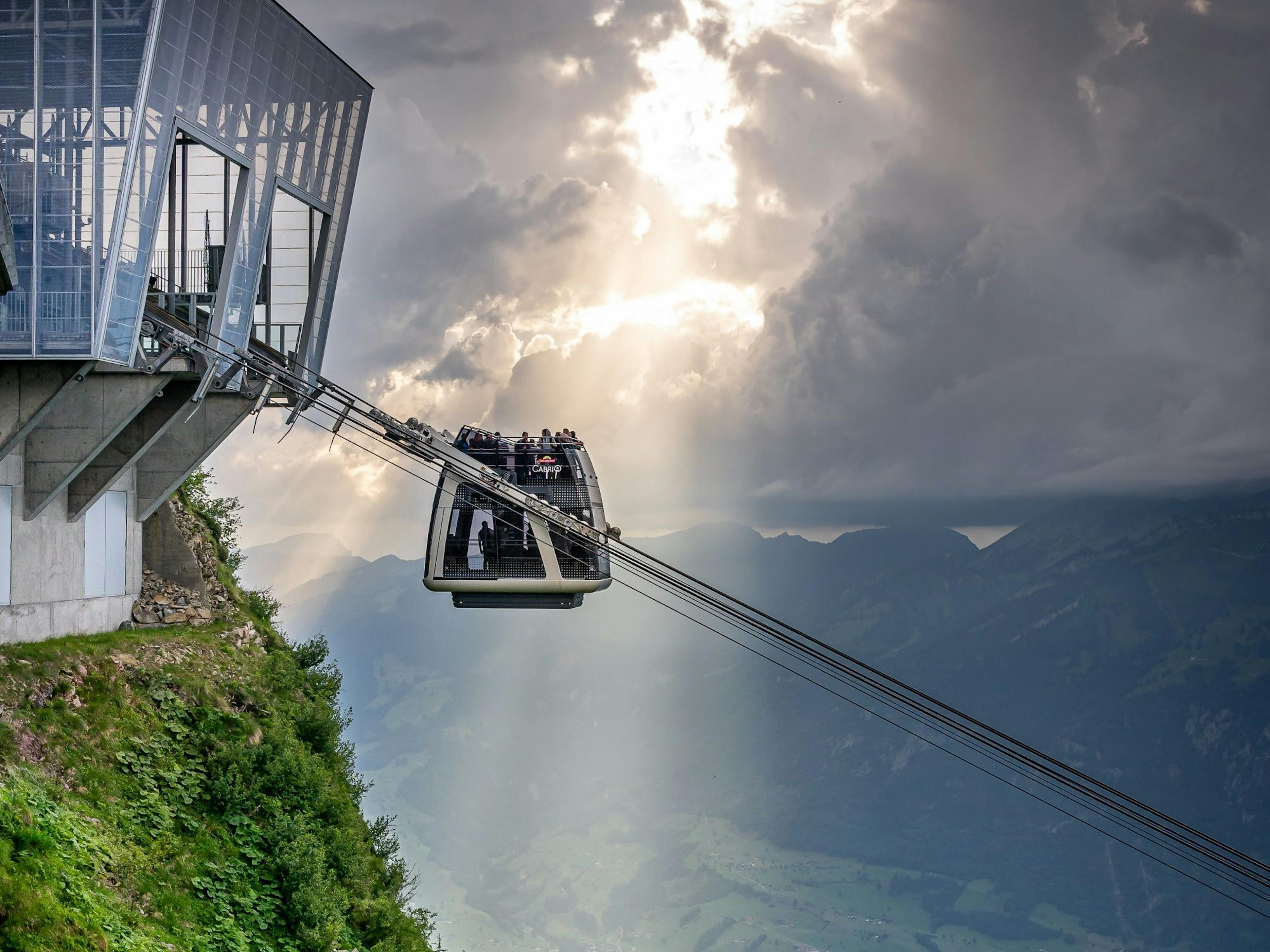4 Highlights of the Furka Cogwheel Railway
- The nostalgic journey takes place on authentically restored cogwheel steam locomotives and historic passenger cars.
- The ride passes through an untouched mountainous landscape of the Swiss Alps, featuring Alpine roses and marmots during the summer.
- Notable engineering feats along the route include the Steffenbach Bridge, which folds in during winter, the Furka summit tunnel, and the steep cogwheel sections.
- You can combine the steam train ride with other modes of transport like the Treno Gottardo and the postbus for a varied travel experience.
Route of the Furka Mountain Steam Railway
The Furka Mountain Steam Railway connects Realp (Uri) and Oberwald (Valais) over the Furka Pass along its approximately 18 km narrow gauge track. The train departs from Realp station (1,538 m above sea level) and follows the Reuss River uphill.
Key Sections of the Route
- Steep cogwheel sections with strong gradients of up to 11.8% lead to the stop at Tiefenbach (1,846 m above sea level) and further to the highest point of the route (2,160 m above sea level).
- Furka Summit Tunnel (1,874 meters long): This tunnel crosses the mountains at an elevation of 2,163 m above sea level and connects the cantons of Uri and Valais. Inside the tunnel, the train runs without cogwheel traction, but with a descent of 3.5%.
- Descent into the Rhone Valley: Using cogwheel sections, the train reaches Gletsch (1,757 m above sea level). This was formerly a stop for the Glacier Express. The journey ends in Oberwald (1,366 m above sea level) with a connection to the Matterhorn-Gotthard-Bahn.
Technical Features
The route combines adhesion (max. 35‰) and cogwheel sections, overcoming tight bends and winding through alpine gorges. The journey takes about 2 hours and 10 minutes by steam train.
Assistance During the Journey on the Furka Mountain Steam Railway
During your ride on the Furka Mountain Steam Railway, you'll be looked after by a team of volunteers. They ensure everything runs smoothly and are available to answer your questions.
The operation relies on over 600 volunteers and their associations, with a total of 6,000 members. The railway operates from late June to mid/end September, running from Thursday to Sunday.
The journey lasts about two hours, with several stops to enjoy the scenery or indulge in culinary treats. A highlight is the 25-minute stop at Furka station, where you can find freshly grilled sausages and chat with the train crew. In cooler weather, a heated tent is available. There are also toilets and an info point with brochures.
